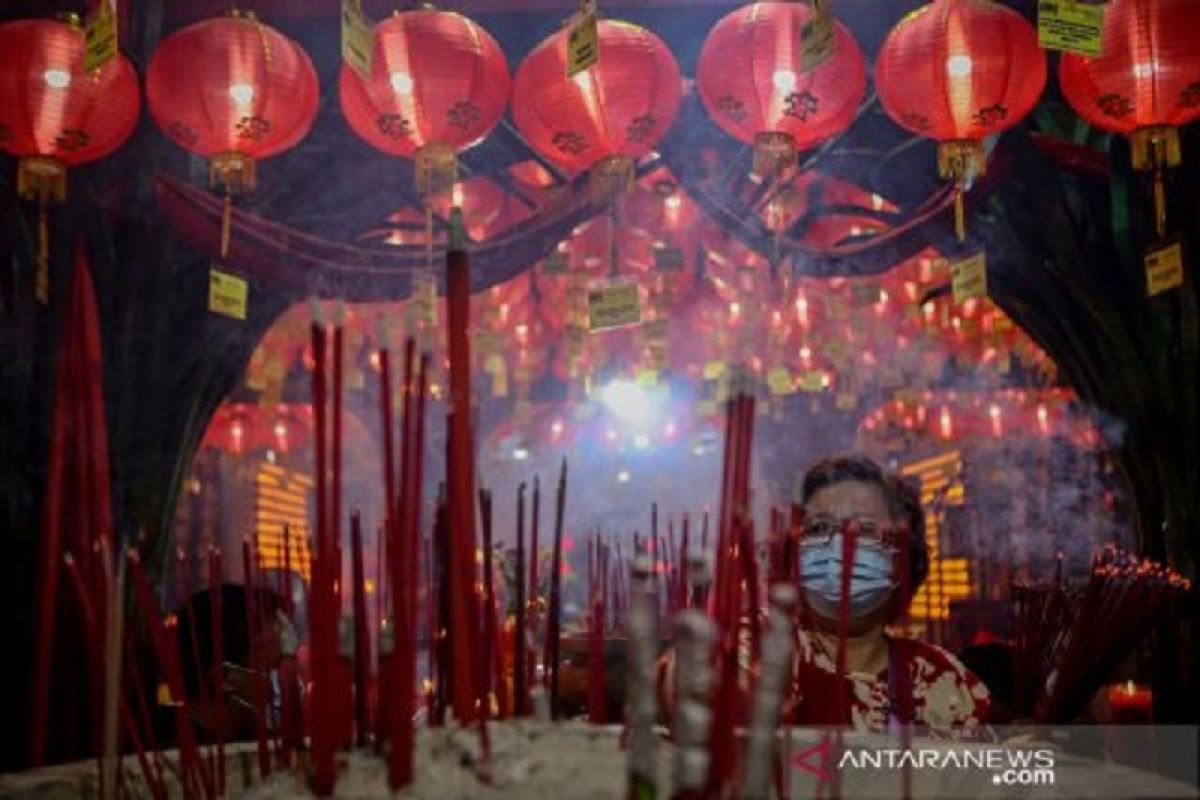The Indonesian government has urged Chinese communities in the country to stay home and avoid crowds amid the festivities, while local authorities have limited temples' capacities as a precautionary measure to curb coronavirus infections.
At a press briefing on Thursday, Minister of Religious Affairs, Yaqut Cholil Qoumas, asked Chinese communities in the country to "tone down" celebrations, and keep them more meaningful and safe.
"Celebrate the new year as simply as possible with family. Follow health protocols, such as wearing masks, washing hands, maintaining a safe distance, limiting mobility and interaction, as well as avoiding crowds," he said.
The Lunar New Year carries a message of compassion and caring for others, he added.
"Gong He Xin Xi, Wan Shi Ru Yi (Good luck and all the best!)," the minister said, greeting the Chinese communities in Mandarin.
In spite of a capacity limit imposed at the temples and other restrictions, Chinese communities in the country are still continuing to perform most rituals and traditions of the Lunar new year. Although things might feel different this time, many are trying their best to welcome "The Year of Ox" as brightly and colorfully as the years before.
Related news: Lunar New Year: Inter-city travel banned for govt staff
Traditions remain
Although the authorities have requested communities to "keep the celebration simple and small”, many people have decorated the temple and the Chinatown in red bright colors and Ox ornaments for this year's festivities.
In Singkawang, a city in West Kalimantan known for its large population of Chinese descent, the local government has decorated office buildings, stores, streets, and doors of houses with thousands of red lanterns as they are believed to drive away bad luck, while welcoming a new prosperous year.
At least five to six thousand lanterns have been installed at every corner of the city since last month, the organizer Bun Cin Thong said.
Besides the lanterns, the organizer has installed a giant replica of an Ox in the city's main street, Beringin Corner, as well as a Prunus mume tree, or meihua (梅花) in Chinese. The tree is a symbol of resilience and perseverance in the face of adversity, and for the Chinese communities in Singkawang, the tree represents people's hopes for a better future after the pandemic, he added.
"We might suspend many events which draw many visitors, but the least we can do is to decorate the city to keep the spirit alive," Cin Thong said.
Meanwhile, people of Chinese descent in many parts of the country, including Bogor, Dumai, and Denpasar, visited temples before New Year's eve to clean statues of deities, replace old decorations and put up new ones, and prepare praying materials, such as fuel and incense.
Inside a Griya Kongco Dwipayana Tanah Kilap temple in Denpasar, Bali, a worshipper of Balinese and Chinese descent, Ida Bagus Adnyana, said he cleaned the statues thoroughly as a gesture of respect and reverence to the deities.
The cleaning process involves use of holy water with flowers, Adnyana said adding, all participants joining the session have been wearing masks and maintaining a safe distance.
There are hundreds of statues of deities and great ancestors at the temple. Some of them include the God of Seas, the Queen of Port, the seven Goddesses, and Sam Po Kong -- a statue built to commemorate Admiral Zheng He or Cheng Ho.
"Before and after the cleaning, we perform a prayer in a small group to invite the deities and let them return to the sky," Adnyana explained.
After cleaning the statues and redecorating the temples, worshipers are also preparing special dishes made of spinefoot fish or rabbit fish and milkfish. For this purpose, fishermen in Batam, a port city in Riau Islands province, have been hunting fish for days to secure supply for the 15-day festival.
For many Chinese, consuming spinefoot fish with family in the new year is mandatory and a symbol of prosperity and luck. The fish, which is either steamed with ginger and garlic or deep fried, is served during family gatherings as part of new year celebrations.
The price of fish surged days before the new year due to high demand, Celcon, a fisherman in Batam, said this week. For most fishermen in Batam, fish is more valuable than gold right now, he remarked.
"It can sell for Rp300 thousand (US$21.5) per kilogram," Celcon said while stressing they are not catching regular fish, but only rabbit fish full of roe, as requested by consumers.
"The price could surge five times higher on new year's eve," he added.
Meanwhile, at many temples, including one in Tangerang, West Java, few groups of people could be seen on Friday, praying in silence, burning incense, while wearing masks, as instructed by the health authority.
Men, women, young and old, waited in line to offer incense to the deities and pray for health and strength as many had lost friends, parents, and loved ones in the pandemic. (INE)
Related news: Inside the centuries-old temple in Jakarta on Lunar New Year
Related news: 'Bhinneka Tunggal Ika' in Jakarta's Dharma Bakti Temple
Editor: Yuni Arisandy Sinaga
Copyright © ANTARA 2021












